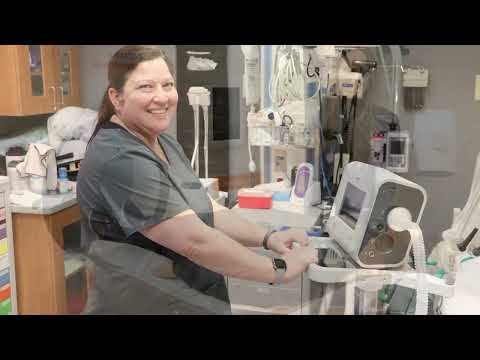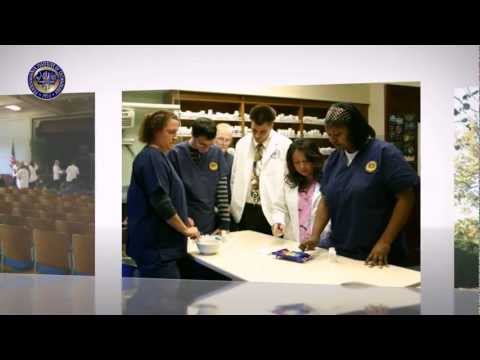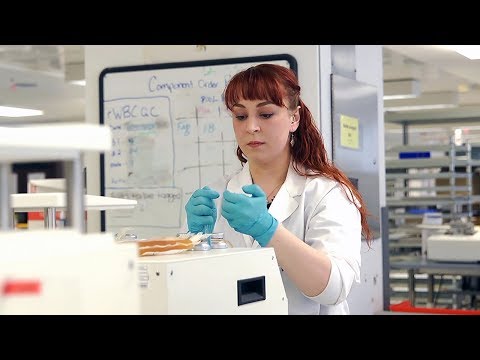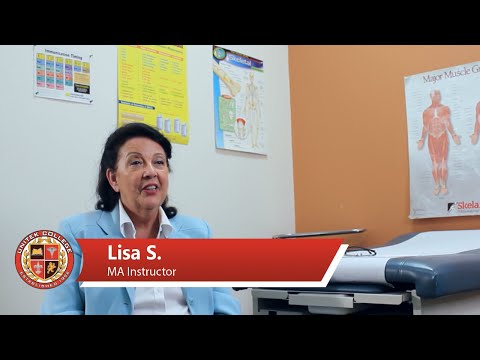The Field of Study for Medical Assistants
Contents [show]
Medical assistants are an important part of the healthcare team. They provide support to doctors and other medical staff, and perform a variety of tasks. If you’re thinking about becoming a medical assistant it’s important to learn about the field of study. This blog post will give you an overview of what Medical assistants do and what you can expect to study if you pursue this career.
Checkout this video:
What is a medical assistant?
A medical assistant is a person who has been trained to provide basic patient care, assist doctors and nurses, and perform administrative tasks in a healthcare facility. They are an important part of the healthcare team, and their job responsibilities can vary depending on the specific needs of the facility where they work.
Medical assistants typically have an associate degree or certificate from an accredited program. Some states have certification requirements for medical assistants, and many employers prefer to hire those who are certified. The most common certification for medical assistants is the Certified Medical Assistant (CMA) credential from the American Association of Medical Assistants (AAMA).
Medical assistants generally work in outpatient settings, such as doctors’ offices, clinics, and hospitals. They may also be involved in insurance processing and billing, as well as scheduling appointments and providing patient education.
The duties of a medical assistant vary depending on their employer’s needs, but they typically include taking patient histories and vital signs, preparing patients for examination, providing assistance during examinations, specimen collection, laboratory testing assistance, scheduling follow-up appointments, and providing patient education.
The duties of a medical assistant
A medical assistant is a professional who works in the medical field supporting the work of physicians and other medical personnel. They perform both administrative and clinical tasks in hospitals, clinics, private practices, and other healthcare settings.
The duties of a medical assistant can vary depending on their working environment and the specific needs of their employer. However, there are some duties that are common to most medical assistants. These duties include scheduling appointments, taking patient histories, performing basic laboratory tests, collecting specimens for lab testing, recording patient vital signs, and giving injections. In addition to these clinical duties, medical assistants also typically handle administrative tasks such as billing and coding insurance claims, preparing patients’ charts, and ordering supplies.
The educational requirements for becoming a medical assistant
Medical assistants perform routine administrative and clinical tasks to keep the offices of physicians and other health practitioners running smoothly. The duties of medical assistants vary from office to office, depending on the size and type of the practice, but they generally include taking and recording patient histories and vital signs, scheduling appointments, answering telephones, handling correspondence, billing and coding for insurance purposes. Some medical assistants take X-rays or give injections under the supervision of a licensed health care provider.
Most medical assistants have postsecondary education such as a certificate or an associate degree. Some states have certification programs for medical assistants, although certification is not required in all states. In order to become certified, medical assistants must graduate from an accredited program and pass an exam.
The American Association of Medical Assistants (AAMA) offers the Certified Medical Assistant (CMA) credential. To be eligible for this credential, candidates must graduate from an accredited medical assisting program and pass a written exam administered by the Certifying Board of the AAMA. Candidates who have been working as medical assistants for five years or more may be eligible for certification through experience. The CMA credential is valid for 60 months before recertification is necessary.
The National Healthcare Association (NHA) offers the Certified Clinical Medical Assistant (CCMA) credential. To be eligible for this credential, candidates must graduate from an accredited medical assisting program and pass a written exam administered by NHA. The CCMA credential is valid for three years before recertification is necessary
The different types of medical assistant programs
There are several types of medical assistant programs, each with their own strengths. These include certificate programs, diploma programs, and associate’s degree programs.
Certificate programs typically last for around a year, and cover the basics of medical assisting. Diploma programs last for two years, and include more advanced coursework. Associate’s degree programs last for two years as well, but also include general education classes.
Each type of program has its own benefits, so it’s important to choose the one that’s right for you. For example, certificate programs may be a good option if you’re already working in the medical field and want to make a career change. Diploma and associate’s degree programs may be a better fit if you’re starting your career from scratch.
No matter which type of program you choose, you’ll be prepared to work as a medical assistant after graduation. Medical assistants play an important role in the healthcare industry, and are in high demand. With the right training, you can start your career in this growing field.
The benefits of becoming a medical assistant
Medical assistants are trained in many aspects of patient care and perform both clerical and clinical duties in doctors’ offices, hospitals, and other healthcare settings. With the aging of the Baby Boomer generation and the increasing demand for preventive medical care, employment of medical assistants is expected to grow much faster than the average for all occupations through 2024.
The increase in the number of medical assistants can be attributed to several factors. As the population continues to age, there will be an increased demand for preventive medical services, which are likely to be provided by medical assistants. In addition, as physicians increasingly utilize medical assistants to perform routine administrative and clinical tasks, they will have more time to see additional patients.
The medical assistant certification process
Medical assistants are in demand in a variety of settings, from hospitals to private physician practices. A medical assistant career offers opportunities to work in both clinical and administrative roles. Although a certificate or diploma is not required to work as a medical assistant, many employers prefer to hire candidates who have completed an accredited program and earned certification.
The Certification Process
Medical assistants can earn certification through the American Association of Medical Assistants (AAMA), the National Healthcare Association (NHA), or the National Center for Competency Testing (NCCT). To be eligible for AAMA certification, candidates must graduate from an accredited medical assisting program and pass the Certifying Board of the AAMA exam. The NHA offers the Certified Clinical Medical Assistant (CCMA) credential, which requires candidates to graduate from an accredited medical assisting program and pass the NHA CCMA exam. The NHA also offers the Registered Medical Assistant (RMA) credential, which is available to candidates who have graduated from an accredited medical assisting program or who have equivalent work experience. To earn NCCT certification, candidates must pass the Medical Assistant Certification Exam (MACE).
The medical assistant salary and job outlook
Medical assistants are in high demand and the Bureau of Labor Statistics predicts that the medical assistant occupation will grow by 29% from 2019 to 2029 — much faster than the average for all occupations. The median annual salary for medical assistants was $34,800 in May 2019.
The top 10% of earners made more than $51,520, while the lowest 10% earned less than $24,680. The best-paid medical assistants worked in offices of physicians, followed by general hospitals and outpatient care centers.
The different types of medical assistant jobs
There are many different types of medical assistant jobs. The most common are administrative medical assistants, clinical medical assistants, and specialty medical assistants. Administrative medical assistants perform tasks such as scheduling appointments, handling patient billing, and maintaining medical records Clinical medical assistants work directly with patients, assisting with examination and treatment procedures. Specialty medical assistants have specialized training in a particular area of medicine, such as optometry or podiatry.
The medical assistant job description
The medical assistant job description includes a wide variety of tasks. Clinical duties may include taking and recording medical histories and vital signs, explaining procedures to patients, preparing them for examination, and collecting and processing lab specimens. Administrative duties may include scheduling appointments, maintaining Medical records billing, and coding for insurance purposes. Some medical assistants also perform basic office tasks such as answering phones and greeting patients.
The medical assistant job outlook
The medical assistant job outlook is promising. Employment of medical assistants is expected to grow by 29 percent from 2016 to 2026, much faster than the average for all occupations.1 The aging baby-boom generation will need more medical services as they live longer and more active lives. This will increase demand for preventive medical services, which are often provided by medical assistants. As a result, demand for medical assistants will grow in both physicians’ offices and in outpatient care centers.
The aging population will not only increase the demand for medical assistants but also for other health care workers. The number of people age 65 and older is expected to more than double from 46 million in 2016 to over 98 million by 2060.2 This increase in the elderly population will require more health care services overall, which will spur employment growth for all occupations in the field, including medical assistants.







